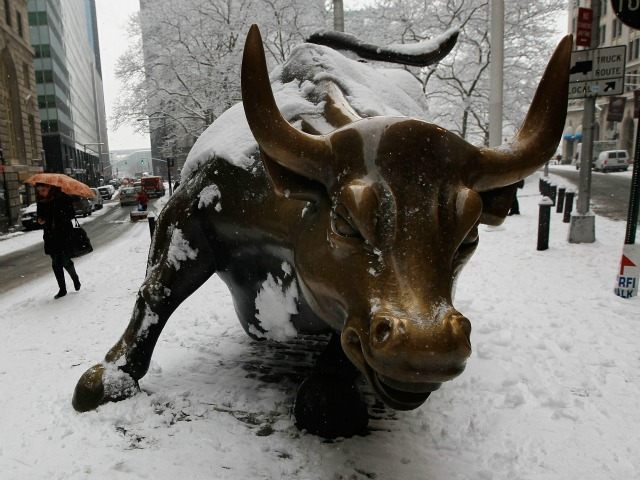The Federal Reserve reported foreign central-banks sold a record $47 billion in U.S. Treasuries during the first two weeks of 2016 in a desperate effort to slow the rising U.S. dollar and to avert domestic banking crises.
According to the latest Fed data, foreign central banks sold $12 billion in the first week of the year and another $34.5 billion in the week ending January 13. As a result, total foreign central bank holdings fell to just $2.962 trillion. Foreign holdings are now below the prior low in November when China was dumping U.S. Treasuries to try to stem crashes in both their yuan currency and stock markets.
The U.S. dollar strengthened by +6.2 percent over the last year against a basket of world currencies and +6 percent against the Chinese yuan currency. Most people assume a strong U.S. dollar means China’s manufacturing will be more competitive.
But that assumption fails to consider the fact that multi-national operating in China and their state-owned-enterprises have been borrowing in U.S. dollars to lock in interest rates that were about 4 percent cheaper than from China banks. China’s 6 percent devaluation means “dollar-loans” must be paid off with 6 percent more in Chinese yuan.
China has a habit of announcing annual growth rates that have miraculously been at a +7 percent compounded rate since 2008. But during the same period, China’s debt grew by about 12 percent compounded and doubled to over $30 trillion. That means that debt in China grew at about $5 trillion faster than the official growth rate.
Breitbart News reported that Lombard Street Research’s estimates that recalculating China’s growth indicates that the real growth rate has fallen to a 2.3 percent rate since mid-2014. That would mean China’s debt grew by $7 trillion faster than the economy since 2008.
Nobody knows just how much companies operating in China have borrowed in U.S. dollars, but it is believed to be at least $3 trillion. That would mean every 1 percent devaluation in the Chinese yuan, costs companies in China about $30 billion.
China’s “economic miracle” was powered by a 65 percent devaluing of their yuan currency in the mid-1990s. But that was when the communist nation had a small economy, little debt, and iron fisted control. China’s economy today is 15 times larger and their debt to GDP leverage is similar to economic basket-case called Greece.
The strength of the United States dollar is not due to the weakness of China and other nations. The U.S. oil and natural gas boom has made America the cheapest location for heavy manufacturing. It will take years to build the infrastructure, but the strength of the U.S. dollar means America is beginning to have its own banking “economic miracle” as the extra interest-payments flood into New York and the U.S. economy.

COMMENTS
Please let us know if you're having issues with commenting.